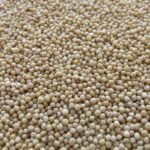Little Buds, Big Impact: The Incredible Journey of Capers
Picture this: You’re biting into a slice of pizza. There’s something more to it, something that’s adding an unexpected zing to each mouthful. Lo and behold, it’s those little green pearls – capers! But capers aren’t just culinary wizards, they’ve got a fascinating history and a robust nutritional profile too.
A Glimpse into the Past: The Origins of Capers
Capers, you might be surprised to know, have been around since antiquity. These tiny buds hail from the Capparis spinosa plant, native to the Mediterranean region. They’ve been flavoring dishes for millennia and even had medicinal uses in ancient Greece.
Over time, capers have sprouted their roots across various cuisines, lending their distinctive flavor to a variety of dishes.
Culinary Prowess: The Various Uses of Capers
Capers, my friend, are quite the culinary chameleons. They may be small, but boy, do they pack a punch! Here’s how you can use them to amp up your dishes:
- Sauces: From pasta to fish, capers can add a unique tang to sauces.
- Salads: Sprinkle some capers in for a salty twist.
- Pizzas and Sandwiches: They’re a delicious way to elevate these favorites.

Remember, capers are often briny, so adjust your seasoning accordingly!
Nutrition Uncovered: What’s in a Caper?
Okay, capers are flavorful and versatile, but are they nutritious? The answer is a resounding yes! Let’s look at their nutritional breakdown:
| Nutrient | Value per 100g |
|---|---|
| Calories | 23 kcal |
| Fat | 0.86 g |
| Protein | 2.36 g |
| Carbohydrates | 4.89 g |
| Vitamin A | 138 IU |
| Vitamin K | 24.6 µg |
| Calcium | 40 mg |
| Iron | 1.67 mg |
Besides being low-calorie, capers are a good source of antioxidants, and they provide Vitamin K, which is essential for bone health and blood clotting.
Frequently Asked Questions
1. Can I eat capers raw?
Well, that’s a good question! Raw capers are usually bitter, so they’re typically pickled or salted to bring out their unique flavor.
2. Are capers similar to olives?
Well, they’re often mentioned in the same breath due to their shared Mediterranean origin and briny taste. However, they’re from different plants and have distinct flavors.
3. How should I store capers?
Keep them in a cool, dry place. Once opened, make sure to refrigerate the jar.
The Final Sprinkle
From their humble beginnings in the Mediterranean region to their status as a beloved culinary ingredient worldwide, capers are quite the underdogs. Beyond their tangy flavor, they offer a host of nutritional benefits, making them a welcome addition to your pantry.
So next time you’re jazzing up a dish, why not give capers a go? They’re small, they’re flavorful, and they’re packed with nutrition. That’s a whole lot of goodness in a tiny package!
Fun Facts
- Capers are one of the main ingredients in tartare sauce.
- The larger the caper, the less aromatic it is. Smaller capers are considered higher quality.
- The Capparis spinosa plant where capers come from also produces a fruit called caper berries, which are also edible.
Source: Healthline




